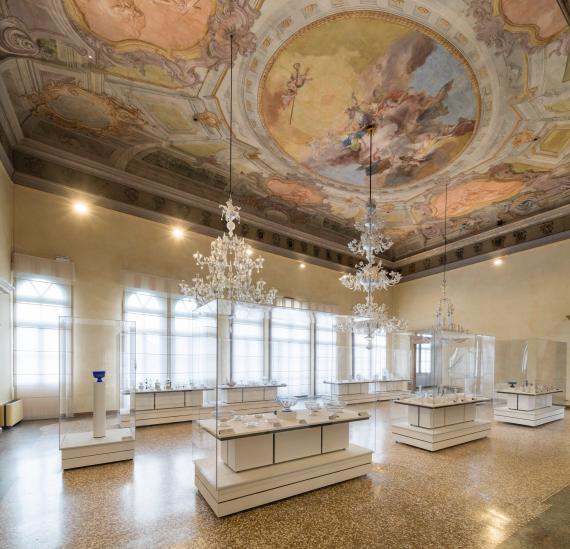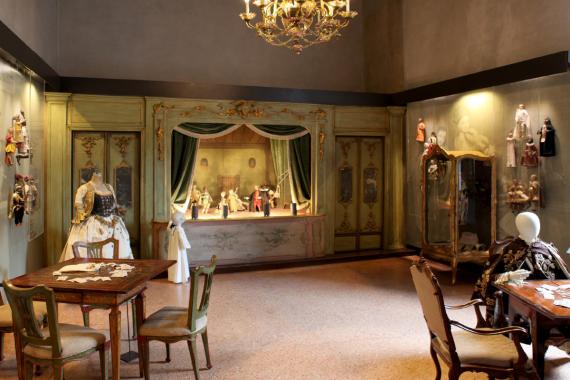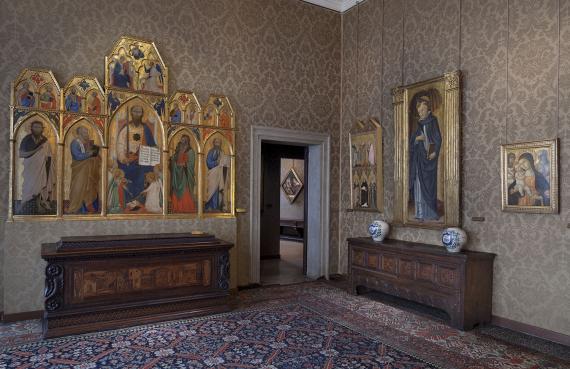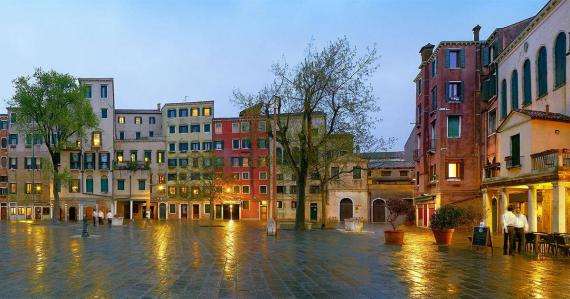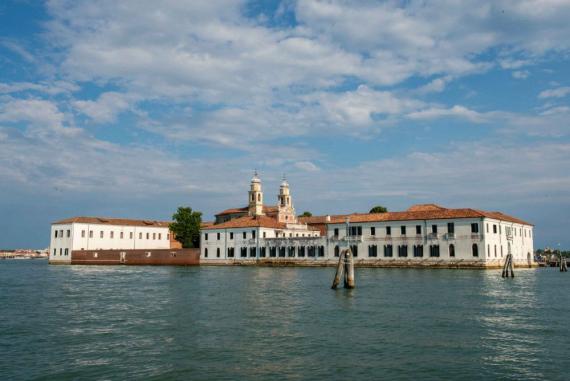The Glass Museum in Murano was founded after the fall of the Venetian Republic (1797) and long years of foreign domination.
In the Gothic palace Ca' Centanni, in San Polo, is located the house when, the 25th of February 1707, the famous comedy writer Carlo Goldoni was born. The building is a little museum of Goldoni, with a center for theatre studies, a library with a vast documentation of its work and the famous puppets little theatre from Ca’ Grimani ai Servi and already included in the Ca’ Rezzonico’s collections.
The magnificent Palazzo Cini, overlooking the Grand Canal on one side, and on the other on San Vio canal, is located halfway between the Accademia and the Guggenheim Foundation. In the XVI century palace, once house of Vittorio Cini, are kept important art collections belonged to the Count, whose daughters Yana (Venice 1924 – Rome 1989) gave to the Giorgio Cini Foundation in 1984, together with the part of the palace where the collections are.
Located in the campo del Ghetto Novo, between the two oldest Venetian synagogues. The Jewish Museum is a little but very rich museum established in 1953 by Venetian Jewish Community. The precious objects exposed to public, important examples of gold and textile manufactures dated back between the XVI and XIX century are a proof of the live Jewish tradition.
Madness Locked Away, this is the name of the Psychiatric Hospital Museum of San Servolo, inaugurated on 20 May 2006 in the Island of San Servolo, and houses items from the Insane Asylum, an institution that marked the history of the island from the early 1700s to 1978. The Museum’s purpose, already implicit in its name (Madness Locked Away), is to highlight the marginalizing and segregating aspect of the mental hospital through specific exhibits, descriptions and explanatory panels.

